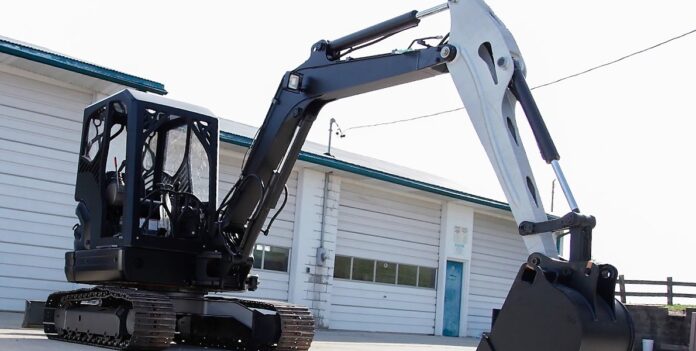Introduction: A Technological Leap Forward
The construction industry has been no stranger to technological innovations, but the development of 3D printing technology has the potential to revolutionize it even further. While 3D printing has primarily been used in constructing buildings, a team led by the Center for Compact and Efficient Fluid Power (CCEFP) is set to create the world’s first fully functional 3D printed excavator. This groundbreaking project aims to take advantage of the benefits that 3D printing offers over traditional manufacturing, by producing a superior excavator with reduced manufacturing and maintenance costs, and greater efficiency.
Design and Engineering: A Collaborative Effort
To make this vision a reality, a team of engineering students from Georgia Tech and the University of Minnesota have joined forces to design the excavator. The Georgia Tech team is focused on designing the boom and bucket, with a goal of embedding hydraulic actuators into the excavator arm to enhance its performance. The University of Minnesota team, on the other hand, is designing the cooling system, hydraulic oil reservoir, and heat exchanger, with the aim of reducing the size and weight of these systems, while still maintaining the excavator’s power and productivity. The combination of these designs is set to result in a state-of-the-art excavator.
Excavator Cab Design Competition: A Futuristic Cab Design
In addition to the above, the project also includes an open competition for undergraduate and graduate engineering teams to design a futuristic cab with a human-machine interface for the excavator. The winners of the Additive Manufactured Excavator Design Competition will be announced soon, and the 3D printing of the excavator is set to take place in December at Oak Ridge National Laboratory’s Manufacturing Demonstration Facility.
Industry Support and Funding: A Strong Foundation
The National Science Foundation (NSF) is funding the project, while the Association of Equipment Manufacturers (AEM) and the National Fluid Power Association (NFPA) are providing industry support through engagement. The involvement of these industry players underscores the significance of the project, as it has the potential to revolutionize the construction industry.
Other 3D Printing Applications in the Construction Industry: Expanding Possibilities
While no major manufacturers have announced plans to 3D print heavy equipment, many companies are exploring the possibilities of this technology. For example, Caterpillar has been using various forms of additive manufacturing since 1990, to produce and test prototypes, create sand molding casts, and print tools and gauges for their manufacturing plants. Similarly, Volvo Construction Equipment has used 3D printing to prototype and test a new water pump housing for their articulated haulers, reducing production costs by a staggering 92% using 3D printing technology.
Conclusion: A Technological Frontier
The world’s first 3D printed excavator is a testament to the potential of 3D printing technology. The construction industry can look forward to more innovative applications of 3D printing, including the first 3D printed bridge in the Netherlands, where two 6-axis industrial robots will begin printing the bridge using additive printing technology similar to welding. As the technology continues to advance, it will be fascinating to see how other manufacturers incorporate it into their construction practices, and the impact it will have on the industry as a whole.















